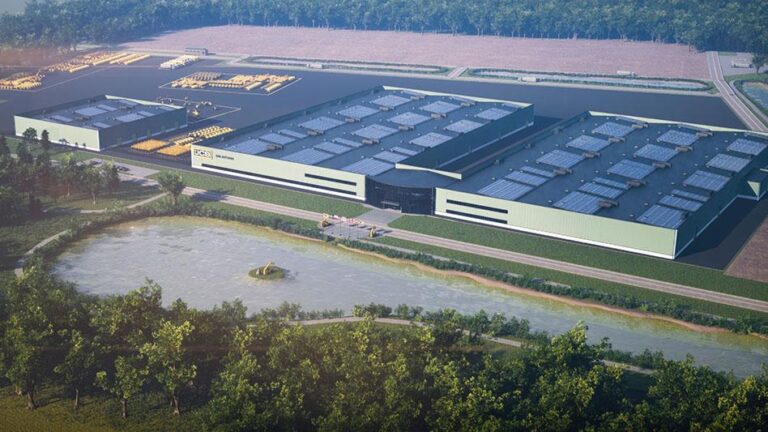JCB Expands U.S. Manufacturing Presence with New Facility in San Antonio, Texas
JCB’s Growth Strategy: Strengthening Manufacturing Capabilities in the U.S.
JCB’s announcement to open a second manufacturing plant in San Antonio, Texas, represents a pivotal advancement in its U.S. growth plan. This new facility will work alongside the existing plant to increase production volumes and better serve the rising demand for construction and agricultural machinery across North America. The investment highlights JCB’s dedication to enhancing its manufacturing infrastructure while fostering economic development through job creation and cutting-edge technology adoption.
San Antonio was chosen for its strategic advantages, including a skilled labor pool, excellent transportation links, and a business-friendly climate. The expansion is expected to deliver several key benefits:
- Expanded manufacturing output: Accelerating production to shorten delivery timelines
- Strengthened regional supply chains: Encouraging partnerships with local and regional suppliers
- Job creation: Generating hundreds of advanced manufacturing roles with career advancement opportunities
| Facility | Location | Workforce Size | Annual Production Capacity |
|---|---|---|---|
| Current Plant | Pooler, Georgia | 450 employees | 10,000 units |
| New Facility | San Antonio, Texas | 600 employees (anticipated) | 15,000 units (projected) |
Boosting San Antonio’s Economy and Workforce Development
The launch of JCB’s second U.S. manufacturing site is poised to significantly invigorate San Antonio’s economic landscape. This development will diversify the region’s industrial base and reinforce its reputation as a key manufacturing center within Texas. The project is also expected to attract a network of supporting businesses, including suppliers and logistics firms, creating a ripple effect that benefits multiple sectors.
JCB plans to create over 700 new jobs during the initial phase, spanning roles in engineering, production, and management. Emphasizing local recruitment and workforce training programs, the company aims to enhance the skill set of the regional labor market. Notable advantages include:
- Competitive wages in manufacturing: Elevating household incomes and quality of life
- Collaborations with community colleges for specialized training
- Support for small and medium-sized enterprises through supply chain integration
- Long-term growth in local tax revenues
| Impact Category | Expected Result |
|---|---|
| Employment Growth | 700+ new jobs |
| Annual Economic Contribution | $150 million |
| Workforce Training Partnerships | Engagement with 3 local colleges |
| Supply Chain Expansion | 25% increase in local sourcing |
Why San Antonio? Supply Chain and Logistics Advantages
JCB’s choice of San Antonio for its new manufacturing hub was heavily influenced by the city’s superior supply chain infrastructure. The area boasts access to major highways, rail lines, and one of the largest inland ports in the U.S., facilitating efficient distribution of heavy equipment throughout North America. This logistical strength reduces shipping times and costs, giving JCB a competitive advantage in timely product delivery.
Moreover, San Antonio’s dense network of suppliers and a workforce experienced in advanced manufacturing technologies enhance operational efficiency. Key supply chain benefits include:
- Shortened procurement cycles: Most suppliers are within a 200-mile radius, enabling faster material acquisition
- Optimized inventory management: Local warehousing supports just-in-time delivery, minimizing storage expenses
- Versatile shipping options: Access to multiple freight carriers allows tailored logistics solutions
| Supply Chain Element | Benefit to JCB |
|---|---|
| Multi-modal Transport Hub | Greater freight flexibility and cost savings |
| Supplier Proximity | Improved sourcing efficiency and collaboration |
| Experienced Workforce | Enhanced production agility and innovation capacity |
Maximizing Local Benefits: Strategic Recommendations for Stakeholders
To fully leverage JCB’s investment, local leaders, educational institutions, and industry partners should foster a cooperative ecosystem. Aligning workforce development initiatives with the specific technical skills required by JCB’s advanced manufacturing processes will create a sustainable talent pipeline that supports both immediate and future operational demands. Programs such as apprenticeships, technical certifications, and partnerships with community colleges will not only benefit JCB but also strengthen the broader manufacturing sector in San Antonio.
Additionally, improving infrastructure and simplifying regulatory procedures will be essential to maintaining the competitive edge brought by the new facility. Efforts should focus on upgrading transportation networks, utilities, and digital connectivity to accommodate increased production and logistics needs. The following table summarizes key action areas for local engagement:
| Focus Area | Recommended Initiatives |
|---|---|
| Workforce Development | Implement targeted training programs; Expand apprenticeship opportunities; Strengthen college partnerships |
| Infrastructure Enhancement | Upgrade road and rail systems; Improve utilities; Expand broadband access |
| Regulatory Facilitation | Streamline permitting processes; Support environmental compliance; Offer tax incentives |
| Community Involvement | Encourage local hiring; Support small business suppliers; Increase public outreach and awareness |
Summary: JCB’s San Antonio Facility as a Catalyst for Regional Growth
JCB’s establishment of its second U.S. manufacturing plant in San Antonio signifies a major step in the company’s expansion within the American market and highlights the city’s rising status as a manufacturing powerhouse. This investment is set to enhance JCB’s production capabilities while generating substantial employment and economic benefits for the region. As the facility moves toward operational readiness, stakeholders will closely monitor its influence on local industry dynamics and the competitive landscape of construction equipment manufacturing.




